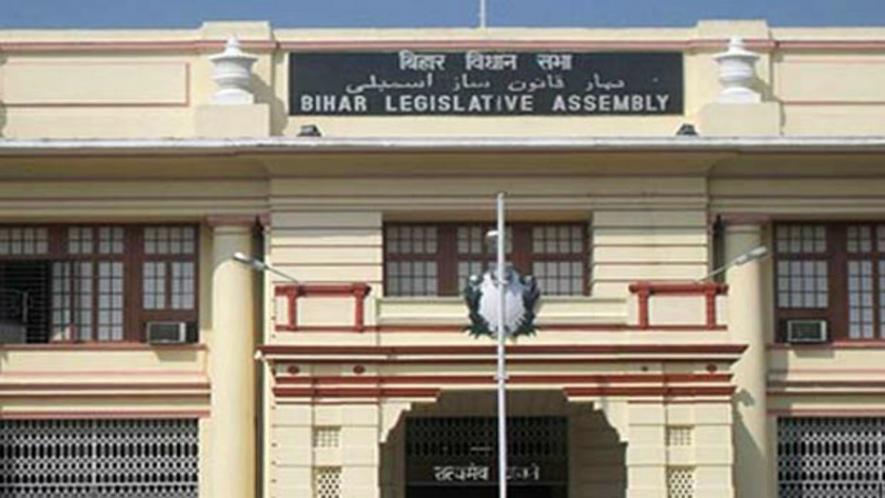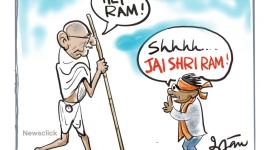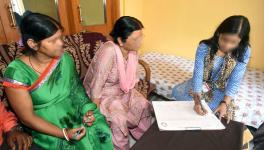Bihar Governor at Last Gives nod to Bills Hiking Reservation

Patna: It took more than twelve days for Bihar Governor Rajendra Vishwanath Arlekar to finally approve two bills to increase reservation in the state from the existing 50% to 75%. The Bihar Legislative Assembly unanimously passed the bills on November 9, 2023.
Officials reported that after the Governor signed and approved the bills, the Bihar government on Tuesday issued a gazette notification regarding the same. The two bills addressing the reservation policy are the Bihar Reservation of vacancies in posts and services (For SC, ST, EBC and OBC) Amendment Bill and the Bihar (In Admission in Educational, Institutions) Reservation Amendment Bill, 2023. On November 18, the Governor had approved both the bills.
The much-awaited Governor's approval of the bills to increase reservation has brought significant relief to the Mahagathbandan government led by Nitish Kumar. The main constituents of Mahagathbandan, Janata Dal United (JD-U) of Nitish Kumar and Rashtriya Janata Dal (RJD) of Lalu Prasad, are expected to soon launch a statewide campaign, primarily next month to connect with people, especially beneficiaries of the reservation hike, ahead of the 2024 Lok Sabha polls.
Leaders of the ruling Mahagathbandan coalition expressed dissatisfaction over the delay by the Governor -- a former senior BJP leader -- in approving the reservation hike bill. Interestingly, except for these particular bills, the Governor has promptly approved all other bills passed by the state legislature during the winter session (November 5-10).
Both the ruling Mahagathbandan and the opposition BJP supported the Bill in the state Assembly without any opposition; it was simply passed.
Following the presentation of socio-economic data in the House in early November, the Bihar cabinet, on the same evening, approved a proposal to increase reservation in government jobs and educational institutions from the existing 50% to 75%, including 10% for EWS (Economically Weaker Sections). Kumar then informed the House that his government would present a Bill on November 9 in the Assembly to implement the reservation hike for SCs, STs, OBCs, and EBCs as per their share in the state's population, reflecting the caste survey report released last month.
Moreover, Kumar highlighted that the decision to increase the quota became feasible due to unanimous decisions by all parties based on the caste survey. Enhancing reservations in government jobs and educational institutions will offer opportunities for OBCs and EBCs in line with their population.
Disregarding ongoing protests by the opposition BJP demanding the resignation of Kumar over his controversial remark on women's role in population control, the Mahagathbandan government proceeded with its action and introduced the Bills to increase reservations.
The new reservationlegislature includes provisions for an 18% quota for Other Backward Classes (OBCs), 25% for Extreme Backward Classes (EBCs), 20% for Scheduled Castes (SCs), and 2% for Scheduled Tribes (STs).
The state government's decision to increase reservations aligns with the caste survey report's data, which revealed the actual situation of various castes and their socio-economic status. According to the Bihar caste survey report released on October 2, 2023, Bihar comprises 215 castes, with a total population of 13.7 crore. This includes 36% EBCs, 27% OBCs (combining OBCs and EBCs), 19% SCs (Dalits), and 1.68% STs (Adivasis).
The socio-economic data from the report indicated that approximately 34.13% (nearly 95 lakh) of all families in the state live in poverty, with a monthly income of just Rs 6,000. Most of these families belong to Dalits, Adivasis, OBCs, and EBCs.
As per the data, 42.93% of SC and 42.70% of ST families live in poverty, whereas 33.16% of OBC and 33.58% of EBC families also face poverty.
Among the SCs, the Musahar community, considered one of India's most marginalized in the caste hierarchy, has the highest poverty rate, with approximately 54% of Musahar families struggling with poverty, followed by 53% Bhuiyans and 42% Chamars or Mochis.
Within the OBCs, 35.87% of Yadav families face poverty, followed by 34.32% Kushwahas and 29.9% Kurmis. Conversely, only 25.09% of General Category (Upper Castes) families live in poverty, significantly lower compared to others. Among the upper castes, poverty is most prevalent among Bhumihars at 27.58%, followed by Brahmins.
Get the latest reports & analysis with people's perspective on Protests, movements & deep analytical videos, discussions of the current affairs in your Telegram app. Subscribe to NewsClick's Telegram channel & get Real-Time updates on stories, as they get published on our website.























